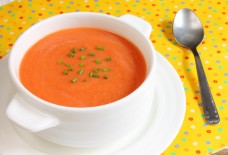Yalla/Come-on, Let’s Eat Like an Arab
By Myrna Daher/Contributing Writer
It’s not uncommon to see Americans adopting the Middle Eastern/Arab lifestyle through cuisine. Over the years, Americans have been raving about the tremendous health benefits of incorporating an Arab diet into their menu. Like many Arabs’ living in America, they pull many vegetables out their gardens to prevent preservatives and GMOs. No garden, no problem buying organic to avoid the harmful effects of preservatives and GMOs. The freshness adds extra flavor while providing enormous health benefits to assist a healthy lifestyle. Let’s take a look at the most common ingredients and types of foods that will make one commit to and incorporate into their daily diet:
Chickpeas are also known as Garbanzo beans; they have been incorporated in many diets for over 7,500 years! Those who incorporate this legume into their diet have a range of health benefits, such as but not limited to stabilizing blood sugar levels, encouraging digestion, a great source of plant-based protein, and vitamins and minerals. Yalla/Come on, let’s cook like an Arab…
Try mixing mashed chickpeas for breakfast with fava beans by making Foul dish. Add lemon juice, crushed garlic and a dash of sea-salt. From chickpeas create also the famous Hummus dish. Mix the batter with lemon juice, blended with tahini and a dash of garlic and sea salt.
Another popular menu item for chickpeas is a salad that contains: the whole bean of chickpeas, fava beans tossed together with chopped tomatoes and parsley, onions, lemon juice, olive oil, crushed garlic, and sea salt.
Additionally, the most recognized after Hummus is Falafel. The main ingredient of Falafel is chickpeas. It’s mixed with parsley, cumin, black pepper, cayenne, salt, onion, garlic, and flour.
This type of vegetable is filled with anti-cancer benefits and protection from free-radicals, along with the ability to lower bad cholesterol (LDL) and increase circulation throughout the body. This is one vegetable, eggplant, that all of us should also keep incorporating in our diet. Not only is eggplant brain food, it serves as a strong source of plant-based protein. Additionally, due to its high content of fiber, it helps digestion and the removal of toxins. The well-recognized dish that is made of eggplant is Baba Ghanouj, mixed with tahini, lemon juice, garlic and a dash of sea-salt.
Another dish is Salata El Batinjan (eggplant salad) which is truly delicious! Smash a couple pieces of garlic, a dash of sea-salt and a little olive oil, with diced onions and tomatoes and mix it together.
Another outstanding way to incorporate eggplant in our diet is Batinjan Mahshi (stuffed eggplant). It’s stuffed with a mixture of ground lamb or beef, rice, pine nuts, and cooked in tomato sauce.
Parsley is not only used to garnish food as done in the West, but it’s a very popular ingredient in many of our popular dishes. Parsley’s consumption is highly recommended by many dieticians. It is anti-inflammatory due to the high levels of Vitamin C, which helps to reduce inflammation and prevent arthritis. Parsley serves as a diuretic by helping to pull out excess water and remove toxins from the body. Furthermore, it has the ability to prevent bacteria from growing by consuming the stems, where it has been clinically tested and loaded with anti-microbial. Parsley has immunity booster due to the high levels of Vitamin A & C.
When it comes to parsley, Tabbouleh is the king of use of parsley. Actually, it’s called the parsley salad that is so popular in our cuisine. More than its refreshing with a crisp taste, it purely contains all vitamin and minerals to alkalize our body. It’s a combination of bulgur (cracked wheat) and a mixture of finely chopped parsley, tomatoes, white onion, mint, and mixed with freshly squeezed lemon, olive oil with sea salt and black pepper. Parsley is also used with most Arab salads, especially, Fattoush.
Another type of food that includes chopped parsley is the famous Falafel batter which is formed into circular balls and flash frying it, or baking it. Falafel is served in a sandwich or separately on a platter with the tahini sauce (sesame oil) and pickles. Moreover, chopped parsley is also used in the tahini sauce, which is famously served with fish.
Tomatoes are highly used with most of our Arab dishes. In fact, it’s the vegetable/fruit that we can’t live without. Grown naturally in our gardens back home and easily here, in America. Tomatoes can be eaten alone as a snack/horderves, with labneh, hummus, and chopped in salads, like tabbouleh and fattoush.
We also use tomatoes very often to prepare sauces for kousa and batinjan mahshi (stuffed squash and eggplant). Additionally, we use tomatoes for sauces cooked with vegetables such as: okra, green beans, and sweet peas. It’s recommended to be cooked on slow fire to maximize health benefits.
Tomatoes are really a great addition to flavor to any dish and garnish to make a great presentation. Tomatoes are such a unique vegetable/fruit that is loaded with so many health benefits. They are high in Vitamin C which strengthens our immunity and Lycopene and fights cancer. Tomato benefits don’t stop there, they help lower blood pressure and increase vision; while aiding digestion and oxidizing the body!
So, do you want to be healthy?
Yalla/come-on, let’s eat like an Arab!



